
Behavioral marketing has changed the way we market. But what should you know about it, and how do you get started? Let’s take a closer look.
In the past, marketing to consumers based on actions, like how many pages they visited on a site, were rudimentary at best. These could tell you, broadly, what a customer might be interested in, but didn’t provide in-depth details.
It was a lot like trying to guess what kind of picture a puzzle might make when you only have a couple of the pieces.
Today, behavioral marketing makes it easier to carefully target users based on the incredibly specific actions they’ve taken.
What is Behavioral Segmentation Marketing?
Behavioral marketing is the strategy of targeting leads or customers based on specific actions they take on a website, rather than just the pages they view. Then, marketers use behavioral segmentation to target specific consumers based on the actions they take.
Rather than throwing a bunch of ads at consumers and hope some of the marketing message sticks, behavioral marketing takes information like browsing and search history, IPs, and cookies and uses this information to build a definitive profile of the user, and then tailor marketing messages accordingly.
As the consumer visits pages, browses products, or lingers on certain coupons, offers become more targeted and precise. The more information an ad network has, the better they can define an ad’s behavioral segmentation to reach the right people at the right time.
Ingenious, right?
Actually seeing behavioral marketing in practice can really stoke the fire in terms of generating new ideas. Rather than provide a few examples, however, I will also share the best tools you can use to get started in behavioral marketing.
Types of Behavioral Segmentation Marketing (with Examples)
Behavioral marketing encompasses a wide range of marketing strategies, including retargeting (also known as remarketing), email marketing, product suggestions, and much more.
All of these are facets of behaviorally-based targeting and can be used as standalone strategies or coupled together for even greater effect on your target audience.
Retargeting
Retargeting and remarketing consider the pages and products you’ve viewed, and then show them again even if you’re not on the original website. Both Google and Facebook offer retargeting options in their respective advertising platforms.
You’ll need to think about which segment of your audience you want to retarget and what kind of offer you want to present.
How to Set Up Ad-Based Retargeting in Google
- Sign in to your Google Ads account
- Click on Campaigns and click the +Campaign button.
- Choose your campaign goal.
- Select “Display” (click here if you want to set up a remarketing campaign for the Search network)
- Name your campaign and specify location, language, etc.
- Click Save and Continue
- Enter your ad group name and bid
- Under the option “Choose how to target your ads,” click “interests and remarketing.”
- In targeting, choose “Remarketing Lists” and then click Set Up Remarketing.
At this point, Adwords will create a remarketing tag for you. You can send it to yourself or your developer along with instructions on how to add it to your website. If you have Google Analytics running, there’s a checkbox to “use the tracking code that’s already on your website” instead. - Then click Save and Continue to start creating your ads, or Skip ad creation to do so later. It’s a good idea to create both text and image ads in various sizes so that you’ll have an ad ready to show no matter what other pages your ideal customer visits.
How To Set Up Retargeting on Facebook
- Login to your Facebook Ad Center and go to Ad Creation.
- Click on Create Audience and choose Custom Audience. For this example, we’ll retarget people who have already visited your site.
- Under “How do you want to create this audience?” choose “Retarget ads to people who interacted with your products on and off Facebook.”
- Choose your target audience from the dropdown menu. You can target a wide range of users, including:
Anyone who visits your site
People who visit certain pages
People who visit certain pages but not others
People who haven’t visited after a set amount of time
A custom combination of your own choosing - Then, you’ll get your pixel code, and you’re ready to start retargeting.
As a side note, if you don’t yet have a Facebook pixel code, you’ll need one to accurately track visitors for Facebook retargeting. Here’s a step by step guide from Facebook on how to do this.
To get the most momentum out of your retargeted Adwords and Facebook ads, you’ll want to plan your campaign accordingly. Who do you want to target? Create an ad that appeals to that specific segment. For example, people who looked at a specific product and possibly added it to their cart but didn’t make a purchase may benefit from a retargeted ad offering a discount or free shipping.
Here are a few behavioral marketing examples to inspire your next campaign:
Wonderbly
This retargeted ad on Facebook targets parents who are unable to see grandparents often with a personalized book. It ran during the COVID lockdown when many families were unable to travel.

Best Buy
This retargeted Best Buy ad lets you know you have items in your cart and helps ease any reluctance by reminding you of their Price Match Guarantee, free in-store pick up, and free shipping.
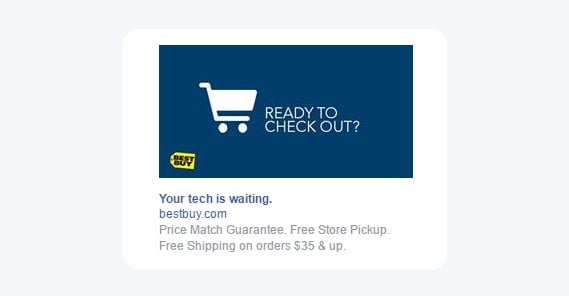
Expedia
This behavioral ad from Expedia targets last-minute shoppers looking for a great travel deal.

Behavioral Segmentation Email Marketing
Behaviorally-targeted email is another example of behavioral marketing. Instead of using the pages that users visited or the actions they took on those pages, behavioral targeting via email targets users based on their status or actions with the site (whether they’re subscribed, added an item to their cart, and so on).
Nordstrom
Nordstrom shows you the item(s) in your cart and lets you view your bag directly. However, this cart recovery ad could still be improved by linking to a method of contacting support or live chat so the user can get answers to any questions that might be holding them back from converting.
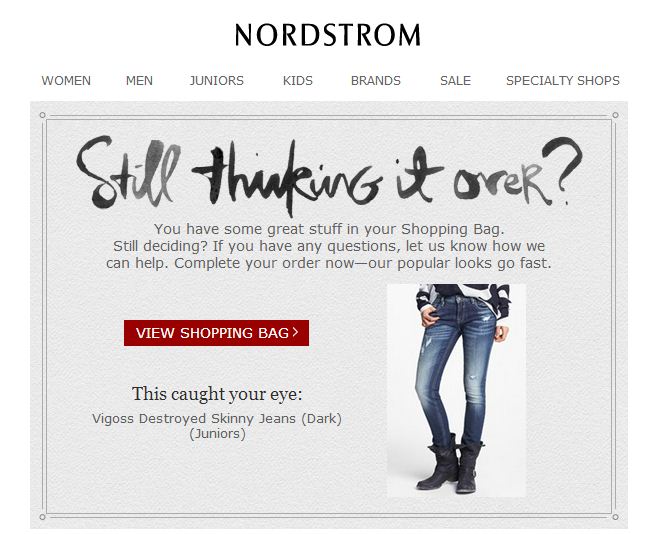
Birchbox
Here’s an example retention email sent to users who unsubscribed from the Birchbox service with a 20% off discount for rejoining the subscription service.
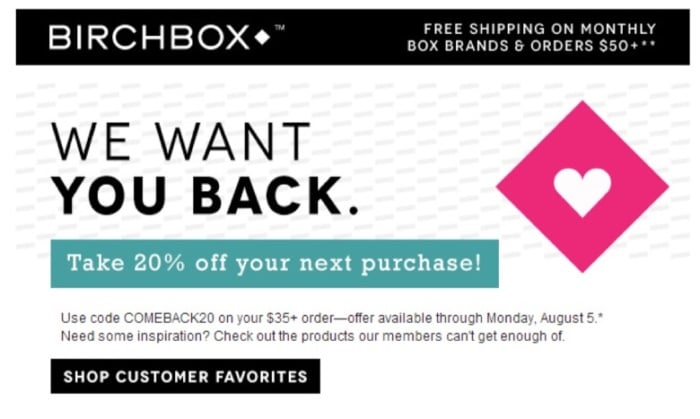
If you’re looking for more examples, we have 29 examples of behaviorally-targeted emails.
Demographic Targeting
This is one of the most common types of behavioral targeting and looks at things like gender, age range, education level, geographic location, race, and other traits to “paint a picture” of a user based on their browsing habits.
You may not think that something as simple as the websites you visit can reveal anything about you on a physical level, but you’d be surprised.
Of course, advertisers are keen to leverage these differences and often repackage and rebrand their products accordingly.
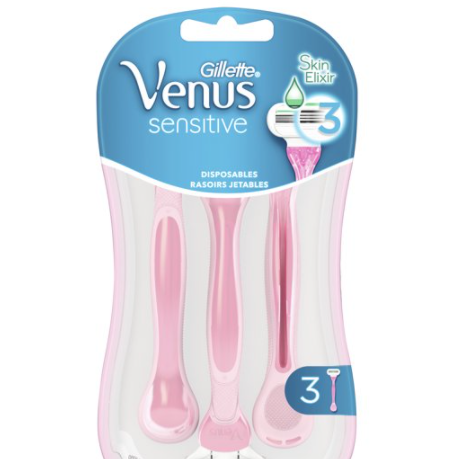
Note: There has been pushback against extremely gendered packaging, like Bic for Her, a pen marketed specifically for women. Be careful not to over target and push your audience away.
Even when you’re not online, demographically-targeted ad examples are all around you.
Toyota
An ad promoting the fuel efficiency of the Toyota Prius targets consumers looking for ways to reduce their impact on the environment.

Pepsi
A “skinny” can of diet Pepsi targeted women trying to watch their calorie intake.

Suggested Selling
Suggested selling pairs additional (or larger/better) items based on things you’ve already bought. Common examples of suggested selling are up-sells and cross-sells. You can think of a cross-sell as ordering a burger and being asked, “Do you want fries with that?”
Whereas an upsell to your burger would be the offer to “make it a meal with fries and a drink for $X.” Suggested selling is often used on sites like Amazon, where buying certain items will tell you not just what others bought, but what they bought together.
Amazon
An Amazon behaviorally-marketed suggested sell with the current item, as well as accessories that users often buy in addition to the original.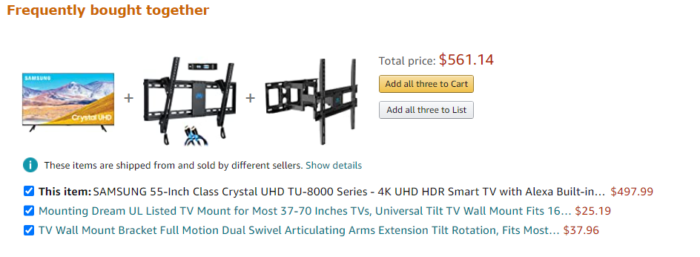
Godiva
You’ll often see suggested selling used on flower and gift websites, where upsells can include everything from chocolates to popcorn.
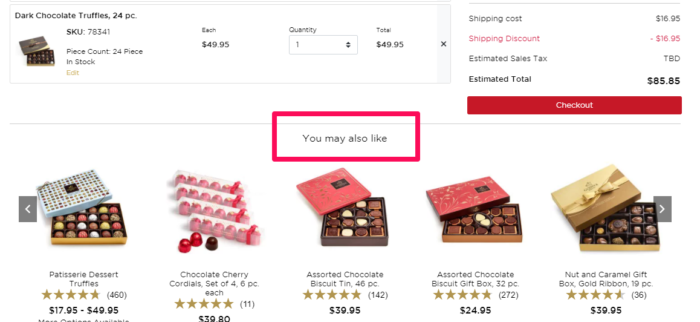
This is an extension of behavioral marketing in that it doesn’t dissuade the customer from their current order but rather suggests other relevant products based on their current purchase behavior.
Conclusion
Now that we’ve explored some behavioral marketing examples and looked at tools to make it more effective, the next step is to try it out for yourself!
Make a marketing plan, then try out some of the suggestions above. Use A/B testing on different behavioral segmentation to see what customers respond to. You may be surprised at the money you’re leaving on the table by not including behavioral marketing as part of your digital marketing strategy!
Are you using behavioral marketing tactics as part of your advertising and promotions? What strategy has been the most effective for you?
The post A Guide to Behavioral Segmentation Marketing appeared first on Neil Patel.
from Blog – Neil Patel https://ift.tt/2EBSDfR

No comments:
Post a Comment